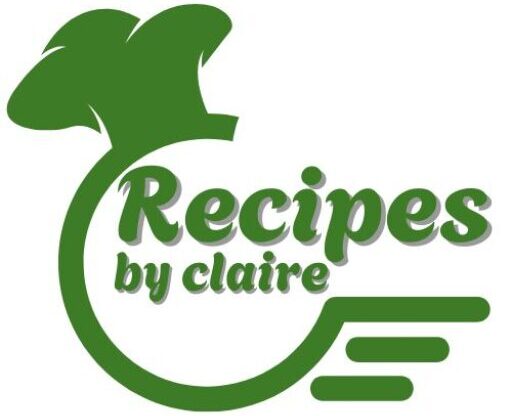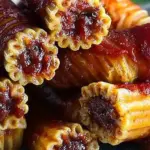The 1770 House Meatloaf isn’t your average weeknight fare. Inspired by the famed Hamptons inn, this recipe takes the humble meatloaf and elevates it into a dish you’d be proud to serve at any dinner party. It’s tender, flavorful, and topped with a tangy-sweet glaze that caramelizes beautifully in the oven. And let’s not forget the rich, creamy roasted garlic sauce that’s served on the side it’s a flavor bomb that perfectly complements the savory meat. This dish is comfort food with sophistication, perfect for cozy evenings, holiday gatherings, or even Sunday suppers that deserve a little something extra.
Full Recipe:
Ingredients:
For the Meatloaf:
-
2 tablespoons olive oil
-
2 cups yellow onion, finely chopped
-
1 tablespoon fresh thyme, minced
-
2 teaspoons kosher salt
-
1 teaspoon ground black pepper
-
3 tablespoons Worcestershire sauce
-
1/3 cup chicken stock
-
1 tablespoon tomato paste
-
2 1/2 pounds ground beef (80/20 preferred)
-
1/2 pound ground veal
-
1/2 pound ground pork
-
1 cup plain breadcrumbs
-
2 large eggs, lightly beaten
-
1/3 cup whole milk
For the Garlic Sauce:
-
1/2 cup mayonnaise
-
2 tablespoons roasted garlic puree
-
1 tablespoon lemon juice
-
1 tablespoon olive oil
-
Salt and pepper to taste
For the Glaze:
-
1/2 cup ketchup
-
1 tablespoon brown sugar
-
1 teaspoon apple cider vinegar
Directions:
-
Preheat your oven to 350°F (175°C). Line a baking sheet with parchment paper.
-
In a medium pan, heat olive oil over medium heat. Sauté chopped onions with thyme, salt, and pepper until translucent (about 8 minutes).
-
Add Worcestershire sauce, chicken stock, and tomato paste. Cook for 2 more minutes. Remove from heat and let cool slightly.
-
In a large bowl, mix ground beef, veal, pork, breadcrumbs, eggs, milk, and cooled onion mixture until just combined. Do not overmix.
-
Shape the meat mixture into a loaf on the prepared baking sheet.
-
In a small bowl, mix ketchup, brown sugar, and vinegar. Spread evenly over the loaf.
-
Bake for 60-70 minutes, or until a meat thermometer inserted into the center reads 160°F (71°C). Let rest for 10 minutes.
-
For the garlic sauce, combine mayonnaise, garlic puree, lemon juice, olive oil, salt, and pepper. Chill until ready to serve.
-
Slice the meatloaf and serve with a generous drizzle of garlic sauce.
Prep Time: 20 minutes | Cooking Time: 70 minutes | Total Time: 1 hour 30 minutes
Kcal: 470 kcal per slice | Servings: 6 servings
The 1770 House Meatloaf: A Gourmet Take on a Comfort Food Classic
Few dishes bridge the gap between nostalgia and gourmet refinement like the legendary 1770 House Meatloaf. Born from a historic Hamptons inn known for its high-end American cuisine, this meatloaf recipe has become a cult favorite among food lovers seeking comfort with a touch of culinary elegance. Whether you’re cooking for a weeknight dinner or impressing guests on a cozy evening, the 1770 House Meatloaf transforms a humble dish into a rich, restaurant-worthy centerpiece.
The History Behind the Dish
The recipe draws its name and inspiration from The 1770 House, a charming inn and restaurant located in East Hampton, New York. This colonial-era structure has long been known not just for its ambiance but also for its exceptional food. The signature meatloaf served at the inn gained widespread acclaim thanks in part to celebrity chef Ina Garten, who helped popularize the dish by featuring it in her own cooking shows and books.
Despite being a meatloaf a dish sometimes associated with frugality or midweek meals this version exudes sophistication. What sets it apart is the thoughtful layering of flavors, the combination of meats, and the addition of a bold roasted garlic sauce served alongside, rather than hidden inside. It’s a dish that commands respect on the plate and delight at the table.
What Makes This Meatloaf Special?
Unlike traditional meatloaf recipes that may rely solely on ground beef and dry breadcrumbs, the 1770 House version uses a blend of beef, veal, and pork, delivering superior moisture, texture, and depth. This trifecta of meats allows for a juicier, richer bite and elevates the overall mouthfeel. The inclusion of sautéed onions and herbs brings in aromatic complexity, while a modest use of milk and eggs helps bind everything together into a smooth, cohesive loaf.
But what really turns this meatloaf into a standout dish is its sweet-and-savory glaze and accompanying garlic aioli. The glaze, made with ketchup, brown sugar, and vinegar, caramelizes beautifully in the oven, adding a glossy finish and tangy pop with each bite. Meanwhile, the roasted garlic sauce silky, creamy, and just sharp enough to cut through the richness adds a fine-dining touch that makes this dish unforgettable.
Flavor Profile: Rich, Balanced, and Deeply Satisfying
At first bite, this meatloaf delivers a complex, layered experience. The tender blend of meats provides a robust, savory base. The glaze offers a hint of sweetness and tang, while the garlic sauce punches through with creamy umami intensity. The onions and fresh thyme woven throughout add herbal and aromatic notes that linger pleasantly on the palate.
Despite its richness, the overall flavor balance ensures that no element overwhelms the others. Instead, they work in harmony each forkful delivers a little bit of everything, with contrasting textures and complementary tastes.
Cooking Technique: A Balance Between Precision and Comfort
While meatloaf is often considered one of the easier meals to prepare, this version rewards cooks who take the time to follow each step with care. Sautéing the onions before adding them to the meat mixture, for example, eliminates harshness and introduces a mellow sweetness that permeates the loaf. Allowing the meatloaf to rest before slicing ensures juicy, intact portions that present beautifully on a plate.
Unlike recipes that call for baking the loaf in a pan, this one is formed freehand on a baking sheet, allowing for more even caramelization and better texture. This method also ensures that the glaze bakes on evenly and doesn’t pool or steam, as can happen in loaf pans.
Serving Suggestions
The 1770 House Meatloaf shines best when accompanied by simple, rustic sides that allow its rich flavors to take center stage. Classic mashed potatoes are a go-to pairing, especially when enhanced with a pat of butter or a splash of cream. Roasted carrots, green beans, or even a side of garlicky sautéed kale can add a vegetal balance and color contrast to the plate.
If you’re looking to serve it at a dinner party or on a holiday table, consider adding a glass of robust red wine such as a Cabernet Sauvignon or Merlot. These pair well with the richness of the meat and the garlicky sauce. Alternatively, a fresh green salad with a tangy vinaigrette can cut through the heaviness for a more balanced meal.
Make-Ahead and Leftover Tips
One of the most convenient aspects of this recipe is its make-ahead friendliness. The meatloaf mixture can be prepared up to 24 hours in advance and stored in the refrigerator. This allows the flavors to meld even further. Just be sure to let the loaf come to room temperature for 20–30 minutes before baking.
Leftovers also reheat well and are incredibly versatile. Slices can be warmed in the oven or skillet and served traditionally, or you can use them to make meatloaf sandwiches with a slather of leftover garlic sauce, crisp lettuce, and toasted sourdough. Some even dice leftover slices and add them to hash for a hearty breakfast option.
Variations for Every Diet
Though the traditional recipe is meat-centric and indulgent, it can be adapted for different dietary preferences:
-
Gluten-Free: Use certified gluten-free breadcrumbs and double-check all condiments.
-
Low Carb: Swap breadcrumbs for almond flour or crushed pork rinds.
-
Dairy-Free: Use a dairy-free milk alternative and substitute the garlic aioli with a cashew-based sauce.
-
Vegetarian: Try using a blend of lentils, mushrooms, and oats for the base, mimicking the texture and savoriness of the original.
These variations can help make this beloved dish accessible to more people while still preserving its integrity and spirit.
Why This Dish Endures
At its core, the 1770 House Meatloaf is a dish that resonates emotionally with people. It recalls comforting memories while also introducing refined elements that make it feel exciting and new. It’s hearty enough for cold nights yet elegant enough for dinner parties. Its ingredients are simple but carefully balanced; its execution is approachable but thoughtful.
This duality comfort and sophistication is what has helped the 1770 House Meatloaf remain relevant in a world increasingly focused on fusion foods and modern twists. It reminds us that sometimes the best meals are the ones that build on tradition, with just a little elevation.
Conclusion:
If you’ve only ever known meatloaf as a basic, utilitarian meal, the 1770 House version is about to redefine your expectations. It’s a true celebration of flavor, texture, and culinary intention. From the first slice to the last drizzle of roasted garlic sauce, this meatloaf earns its place at the center of your table not as a side thought or last-minute meal, but as a dish worth planning your evening around.
So whether you’re a longtime fan of this classic or experiencing it for the first time, give the 1770 House Meatloaf a place in your recipe repertoire. It’s more than just comfort food it’s a reminder that elegance and familiarity can exist beautifully on the same plate.






